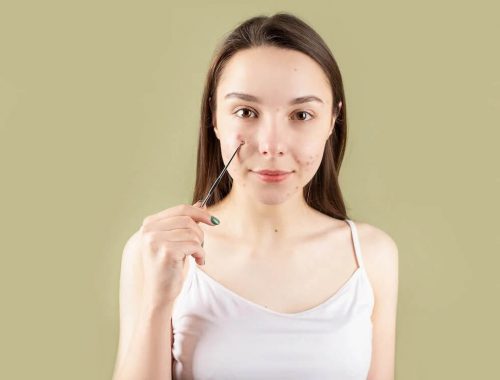How Sun Exposure Affects Melasma and What You Can Do About It
Brown or grayish-brown spots on the face, particularly the forehead, cheekbones, and upper lip, are common symptoms of the skin disorder melasma. Sun exposure is one of the main factors contributing to the onset and aggravation of melasma, despite the fact that the precise etiology of this ailment is yet unknown. This blog post will discuss how melasma is impacted by sun exposure and what you can do to prevent additional skin damage.

The Connection Between Sun Exposure and Melasma
- Sun Exposure Boosts Melanin Production Melanin is the pigment that gives our skin color. Sun exposure stimulates its production. More melanin is produced by our skin when it is exposed to UV radiation in order to shield itself from further harm. This process accelerates in those who have melasma, leading to the development of brown patches on the skin
- UV Rays Penetrate Deeply into the Skin: UV rays damage the surface of our skin as well as the deeper layers beneath it. This may result in further damage and aggravation of melasma symptoms
- Along with exposure to sunlight, hormonal changes including pregnancy, the use of hormonal contraceptives, and hormonal imbalances can also cause melasma. Melasma can become much more chronic and challenging to cure when hormone fluctuations and sun exposure are combined
What You Can Do to Protect Your Skin from Further Damage
- Use a Broad-Spectrum Sunscreen: Using broad-spectrum sunscreen each day is the most crucial thing you can do to protect your skin from further harm. Make sure your sunscreen offers protection from UVA and UVB radiation by looking for one with an SPF of at least 30. If you are outdoors for more than two hours, reapply sunscreen every two hours
- Wear Protective Gear: You should wear protective clothing, such as a wide-brimmed hat, sunglasses, and long-sleeved clothes, to protect your skin from the sun in addition to using sunscreen. Consider donning a UPF (ultraviolet protection factor) fabric shirt if you plan to spend a lot of time in the sun
- Avoid Peak Sun Hours: Try to stay out of the sun as much as possible during the hours of 10 am and 4 pm, when the sun is at its most intense. If you must be outside during these times, make sure to wear protective gear and seek out shade
- Maintain Hydration: Drink plenty of water to keep your skin hydrated as dehydration might make it more susceptible to sun damage
Treatments for Melasma
- Topical Creams: Topical creams containing hydroquinone, corticosteroids, and retinoids can help to lighten the brown patches of melasma. However, these creams can also make your skin more sensitive to the sun, so it’s important to use them in combination with a broad-spectrum sunscreen
- Chemical Peels: Chemical peels can help to exfoliate the skin and remove the top layer of damaged skin. This can help to lighten the appearance of melasma and improve skin texture
- Laser Therapy: Laser therapy can help to lighten the appearance of melasma by targeting the pigment in the skin. This treatment can be effective but is often associated with side effects such as redness and swelling, so it’s important to talk to your doctor before undergoing this procedure
- Microdermabrasion: Microdermabrasion is a gentle exfoliating procedure that can help to improve the texture of the skin and reduce the appearance of melasma. This procedure involves removing the top layer of dead skin cells with a gentle abrasion process, which can help to reveal brighter, more even-toned skin. However, it’s important to note that microdermabrasion can also make your skin more sensitive to the sun, so it’s important to protect your skin with a broad-spectrum sunscreen after the procedure
- Prescription Medications: In severe cases of melasma, prescription medications such as tranexamic acid or azelaic acid may be prescribed to help lighten the brown patches. These medications work by inhibiting the production of melanin in the skin, but they can also have side effects, so it’s important to talk to your doctor before starting any new medications
One of the main causes of the onset and progression of melasma is exposure to the sun. Use broad-spectrum sunscreen, cover up with protective clothing, stay hydrated, and avoid peak sun hours to prevent further skin damage. There are many therapies for melasma, including topical creams, chemical peels, laser therapy, microdermabrasion, and prescription drugs. To find out the best course of action for your unique needs, it’s crucial to speak with your doctor.
Always remember that keeping your skin safe from further harm is the best approach to avoid and treat melasma. So make sure to take good care of your skin to enjoy years of gorgeous, even-toned skin!
You May Also Like

Acne-Fighting Diet: How to Eat for Clear Skin
January 21, 2023
Benefits of an Anti-Inflammatory Diet for Acne-Prone Skin
January 24, 2023


